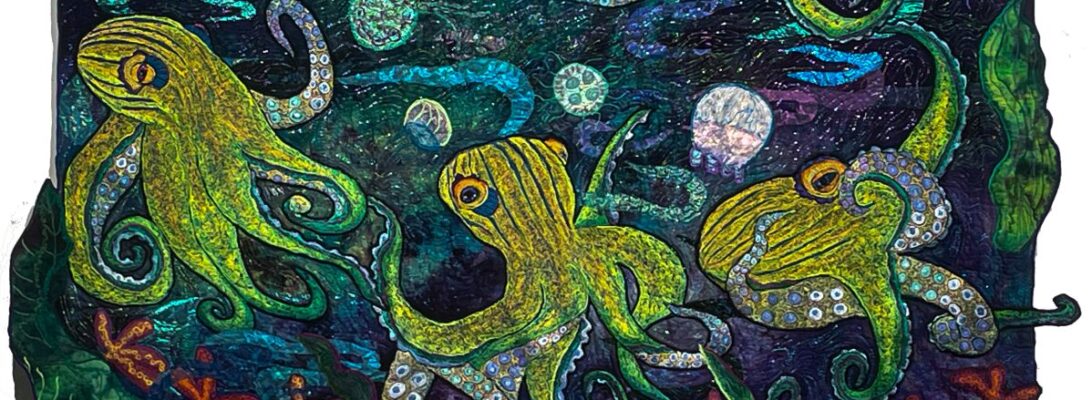
I’ve whined a bit about larger work this month, mostly because I had 6 full sized pieces to finish. Not fun. But all but one is done.
So in response to that, and in giving myself a break, I decided to do something smaller. These Japanese cranes have been on my mind for a wile. Originally they were on a textile.
People talk about making a smaller version of something and then blowing it up. I’ve never found that works. The size changes what you can do with your stitchery.
When I work large, my thread color choices have to fill in a space. It’s a larger space. I do have a formula for that. And a basic color strategy.

- I work dark to light.
- The color of my background is the light within the piece. So that color has to be part of the choices.
- Everything is accentuated. I choose my colors to be more intense than the overall effect I want
- Your eye will mix the colors. Even if they don’t seem to go together. Don’t be afraid.
I choose
- A dark tone of my desired color.
- A shader, usually either purple, brown, dark green or blue.Often I’ll use a complement from my desired color
- Several shades of th chosen color.. They can differ in tone and clarity, but they need to be lined up dark to light.
- A shocker. Usually the complement in a bright form
- A light color that is the color of the piece.
- The lightest color. Usually lighter than you want the piece to be as a highlight.
That fills in a lot of space.. It needs to. It allows for some intense coloration.

Smaller work is smaller space. No help for it. The stitching isn’t as intense and you end up with a much small space to fill in. So your choices pull in.
For your thread choices you’ll want.
- The darkest tone of your color
- A toner, complement, brown, blue, or purple
- A mid color
- Maybe a shocker
- A light color
- May be a highlight color
It’s the same theory, but it’s stepped down for smaller spaces. I don’t like to work that way because it makes wild choices feel more intense. It abstracts very quickly
So I worked on these cranes this week. They’re white, but I worked up to that with a lot of soft toned pastels and greys. I was completely worn out on them until I slipped in a bit of turquoise.
I’m not wildly unhappy with this, but I feel limited by it

.The joke is that the ended up fitting into a yard of hand dye, the size I most often use for large quilts.
I don’t often do this, but I have a pervasive urge to redraw the image bigger, and go wild with the colors, just to see what I get.
It’s always good to change things in your work. Any change is a challenge. Chainge the size, change your pallet, change your subject, and certainly at the right moment, change your undies. Change is good.




























































































